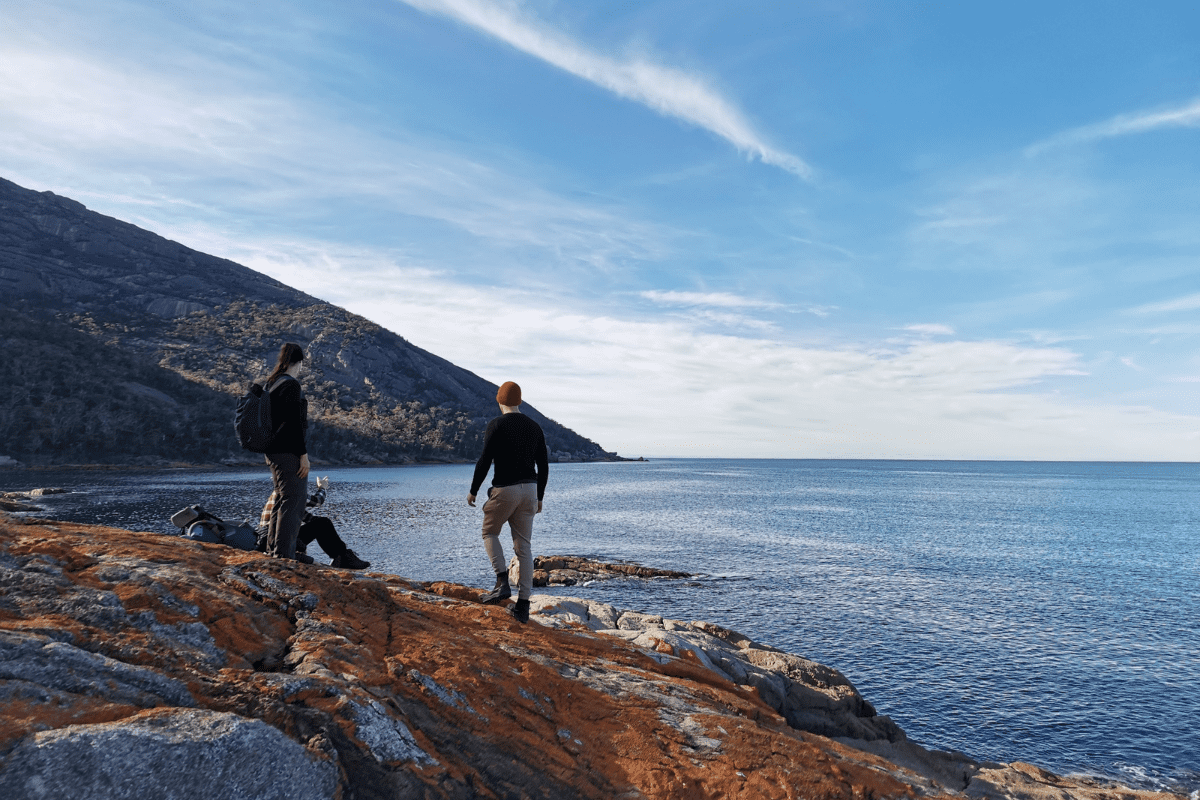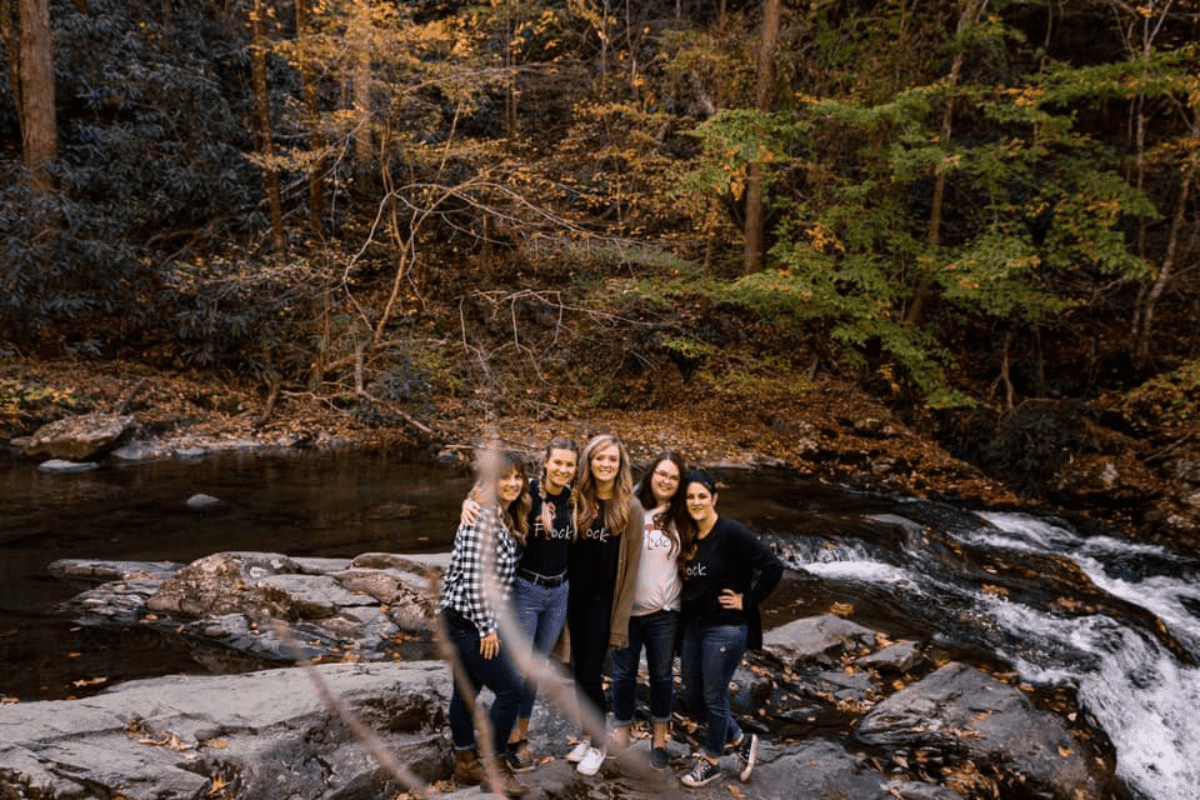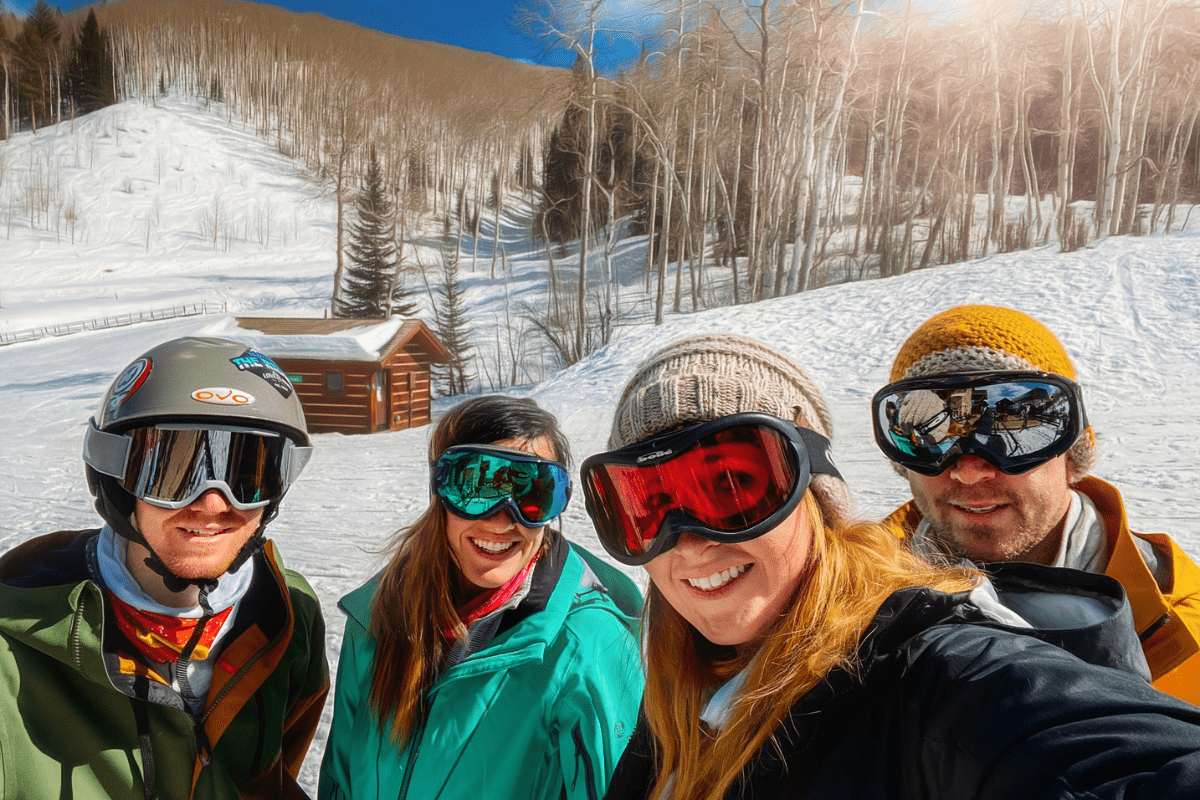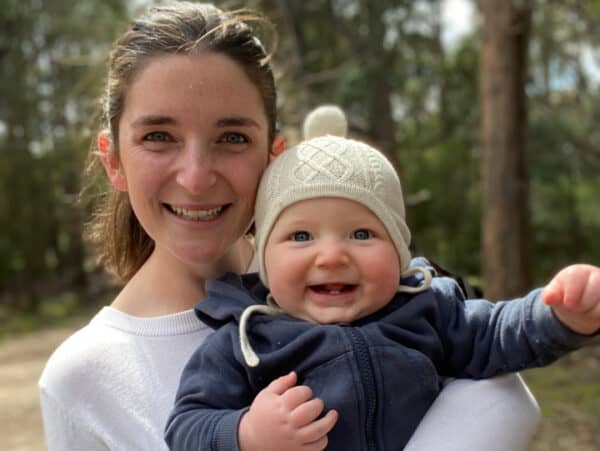Your cart is currently empty!

Adventure Friends, May We Be Them and May We Know Them
One of the best things about getting outside is being able to share the experience with friends. It could be purely for socialization, or to distract the kids with friends so they are more enthusiastic for challenging outdoorsy elements. Either way, having friends present can completely change the dynamic of an adventure. Sometimes, we are lucky, and adventure friends are found and made easily. Other times, our circumstances might make it harder to create these types of relationships. Today, self-confessed extrovert Jacqui Hazell of @tiny.adventures.often and Tasmanian mom of two, explores the importance of adventure friends, offers some tips on where to find them, and how to be one in return.

What is an “adventure friend”?
One of my firm beliefs is that we are shaped by those we choose to spend our time with. Our “village.” They’re not with us purely for emotional support and food drop-offs in hard times, but to inadvertently provide a magnetic pull towards life, towards new experiences and adventure.
What’s more, a good adventure friend is there at the base of your wagon, yanking your wheels out of the rut you’ve been traveling on. Next, they send you careening down a wildflower-covered hill, and they are right there beside you, hollering all the way down! They are generally the ones texting you with their latest crazy idea and asking, are you keen?

Where it started
As a new mother six years ago, I made a friend at a local playgroup who was an ex-hiking guide. We would organize to strap the babies to our chests and hike trails every week that had us puffing and red-faced. When we’d arrive at the destination and unstrap our babies, I’d marvel at what we’d achieved.
Having a friend who invited me out each week to places I sometimes didn’t even know existed empowered me to get out of my physical comfort zone. It helped me to settle into a parenting rhythm that suited an outdoorsy spirit. Those adventures have inspired me through to the here and now.
When you’re just getting started taking kids on adventures, it’s daunting. But, with every adventure, confidence is gained, and boundaries widen a little further. Adventures start small and build as you gain experience in your outings, confidence in your abilities, and curiosity in what else you can accomplish!
Why spending time outside with friends is important
Spending time outside in your area with friends can be an excellent way to foster a sense of connection and appreciation for your community. From exploring local parks and hiking trails to discovering hidden gems and natural wonders, spending time outside strengthens the bonds you have with each other, as well as makes you more appreciative of where you live. And living in a place that you love can have a significant impact on your mood, attitude, and overall mental health. When you feel connected to your surroundings and your community, it can provide a sense of security, belonging, and fulfillment. Furthermore, it can help to reduce stress levels and alleviate anxiety.
Outdoor activities often involve physical movement, whether it’s hiking, biking, playing sports, or simply exploring nature. Engaging in these activities with friends adds an element of fun and motivation, making it more likely that we’ll participate in regular physical activity. Spending time outside promotes cardiovascular health, improves fitness levels, boosts energy, and reduces the risk of various health issues.

How can having adventure friends help get our kids outside?
Having “adventure friends” can play a significant role in encouraging children (and their parents) to spend more time outdoors. Here are several ways in which adventure friends can help get kids outside:
Peer power
Kids are often more likely to listen to their friends rather than us as parents, often emulate their friends’ behaviors, and generally aren’t keen to miss out on any excitement being had by others. When their friends are enthusiastic about outdoor adventures, children are more likely to be motivated to join in and explore the outdoors as well. This positive peer pressure can be a handy tool while out on the trail. Positive peer influence can create a sense of excitement and encouragement for outdoor activities. The shared joy of being outside together can help foster a love of the outdoors.

Getting out the door
Have you heard of the doorstep mile? It’s a concept that means the first step out of the door is the longest step of any adventure. We might have miles of trails on our ‘to-do’ list, or new experiences we’ve wanted to try but haven’t quite been able to because taking that very first step is the hardest. Having friends that lure you outside with the promise of socialization and accountability while trying something new can shorten that doorstep mile considerably until it’s just a normal step, after all.
Safety and supervision
Sometimes it can feel scary or intimidating to try new adventures with your kids on your own. Adventure friends can provide an additional layer of safety and supervision when engaging in outdoor activities. With more people involved, other parents and kids can look out for each other, help in case of emergencies, and ensure a safer outdoor experience overall. Parents may also feel more comfortable allowing their children to explore the outdoors when they have responsible adventure friends accompanying them.

Expand your horizons by trying new things
Adventure friends can introduce us and our kids to new outdoor activities and hobbies they might not have otherwise discovered. Each friend brings their own interests and experiences, broadening the range of outdoor adventures available to children. Trying new activities can be exciting and encourages kids to step out of their comfort zones. Having friends that are willing to brave all types of conditions and challenges can expose your kids to new experiences and inspire them to try something they’ve never tried before.
Socialization, teamwork & support
Spending time outdoors with adventure friends promotes socialization and teamwork skills. Kids learn to communicate, cooperate, and collaborate with others while navigating outdoor challenges or engaging in group activities. These skills are essential for building healthy relationships and fostering social development. Adventure friends also provide support and encouragement when outside on adventures, making outdoor activities more enjoyable and rewarding. Friends can motivate each other to push their limits, overcome obstacles, and try new things. This support system helps children build confidence, resilience, and a positive attitude toward outdoor exploration.
Tips on finding adventure friends
Making new friends as a parent can be hard and intimidating. Add on top of that, trying to find other parents with shared interests and kids around the same age as yours. Location can also be a hurdle; maybe you’ve moved and have struggled to make friends in your new area. Alternatively, it could be that you don’t feel comfortable talking with strangers.
Finding friends who are interested in outdoor adventures can also be an exciting process for families. Here are some tips to help you connect with like-minded individuals who can join you on outdoor adventures. Try some of these suggestions if you feel like you’ve struggled to find your crew.
1. Participate in community events
Finding and participating in community events that promote the outdoors can be a great way to meet like-minded people. Keep an eye out for community events that promote outdoor activities. Events such as de-trashing, conservation and land care, charity walks, festivals, fairs, and working bees. By attending such events, you increase your chances of meeting other families who enjoy outdoor adventures.
Check if your child’s school or community center offers outdoor programs or summer camps focused on adventure activities. This can be a great way for your child to meet other kids with similar interests, and it can open doors for building relationships with other families who enjoy outdoor adventures.
2. Use social media and online communities as a tool
Many groups that focus on adventure enthusiasts and outdoor activities have groups online that are easy to join. These groups will often share information about upcoming activities and events related to their specific interest. Join relevant forums or Facebook groups in your area to connect with other families who share your passion for the outdoors. Once you find a person or two that’s interested, plan and coordinate adventures together.
If imposter syndrome is stopping you from joining a group that centers around an activity you’re interested in but haven’t yet tried, you could try observing until you feel comfortable interacting.
3. Organize your own events
If you can’t find any local groups that you want to join, consider creating your own event and inviting people along. When I had my first baby, I was shocked that there were no baby-wearing hiking groups in the area. I created a page on Facebook where I could invite other parents to join, and then planned walks for our group. This was mostly through word of mouth and people sharing my page with people they thought might be interested. It gained traction quickly and was so much fun for me and my baby.

Ways to be an adventure friend yourself
It’s one thing to have friends that encourage us to live life fully and get us adventuring, but it’s extra fulfilling to be this friend in return. By being an adventure friend, you can inspire and support other families in their outdoor pursuits, helping them create lasting memories and a love for nature and adventure. Here are some things that might be helpful to keep in mind.
Extend the invitation
Don’t shy away from reaching out to someone, even if they are only an acquaintance, and asking them to join you on an adventure. Invite other families to join you on your outdoor adventures. Whether it’s a hiking trip, a day at the beach, or a picnic in the park, including other families creates opportunities for shared experiences and fosters a sense of community. Take the initiative to organize group activities for families. Plan outings, such as group hikes, nature walks, or bike rides. Coordinate logistics, suggest meeting points, and create a sense of excitement around the event. This can take the pressure off other families to plan everything and make it easier for them to participate.
Be specific
It helps to be specific in the initial invitation to set them up for success and set their expectations. Include the activity that you are thinking of doing, some helpful info, and a few available times that you are free to do it that might work with their schedule. This goes for online groups as well.
For example, it’s more successful to say something like: “Hello! I’m planning a hike in the Roan Mountain Highlands with my kids soon. The hike I’m looking at is a 1-mile loop, perfect for little kids and taking our time. We’re free on Tuesday mornings (9-1) and Thursday afternoons (11-3) if anyone is interested in joining us. My kids’ ages are 3 and 6. I’d be happy to send you a list of a few items to bring if that helps. Let me know if you have any questions!”
That’s much better than: “Is anyone interested in going on a hike soon?”

Be responsible and helpful
If you have outdoor gear or equipment that other families may need, offer to lend or share them. This can be especially helpful for families who are new to outdoor activities and may not have all the necessary gear. Sharing resources can make outdoor adventures more affordable and accessible for everyone. Handy things while out adventuring might include letting your buddies know that you’re carrying a first aid kit or that you’ve got a picnic blanket big enough to share.
Share your knowledge
Offer your expertise and share your experiences with outdoor activities. Be the person that provides recommendations for family-friendly hiking trails, camping spots, or fun outdoor destinations. Share tips on gear, safety, and planning to help make their adventures smoother. If you have the knowledge and experience to help others, be sure to do it!

Emphasize inclusivity and adaptability
Be mindful of the needs and abilities of the families you’re supporting. Ensure that activities are inclusive and adaptable to accommodate different skill levels, ages, and preferences. Consider activities that can be enjoyed by everyone and make adjustments as needed to ensure everyone feels included and comfortable.
Be supportive
With adventures come challenges; that’s why we love them! Be a source of support and encouragement for other families as they embark on outdoor adventures. Offer words of encouragement, provide reassurance, and help build their confidence. Share stories of your own challenges and how you overcame them to inspire and motivate them. Be conscious and respectful of the physical limits of your adventure buddies. Stick together, and if the need arises to turn around halfway, then let them know that’s ok and you’ve still had a fun adventure!
Document the fun
Be the friend that snaps candid moments of your adventure buddy and their kids. I usually take lots of photos of my kids enjoying the outdoors, but I have hardly any of the kids, and I adventuring altogether. Being able to send a few photos to your friend of her adventures with her little ones when the day is done can help them visualize their accomplishments and encourage them to be proud of what they’ve achieved. A photo like that might mean the world to her (I know it would to me). They also then have something extra to share on social media (if that’s their jam) to mark the occasion.

Having adventure buddies from afar
Sometimes, there’s nothing quite like the trusty friends we have already made along the journey of life. But, oftentimes, those friends might scatter near and far as time goes by. If you have friends like this that don’t live nearby, consider trying these ideas to inspire each other from afar.
Set common goals
Establish mutual challenges or goals that you and your friend can work towards together, even from afar. For example, you could set a goal to hike a certain number of trails each month or year. Keep in touch about your progress and check in with your friends on theirs. Make time to tell the stories that go along with the adventures and it’ll feel like you were there!
Stay connected
Keeping up regular contact makes it easier to help inspire each other. Share photos and videos of adventures you’ve had, or consider video calling from a campsite or trail if there is enough reception to share the joy. Highlight the fun and positive aspects of being in nature and engaging in outdoor activities. Seeing your enthusiasm and experiences can inspire them to seek similar adventures. Schedule video calls or virtual hangouts with your friends and their kids. During these sessions, discuss outdoor activities, share ideas, and plan future adventures together. This can help maintain a connection and keep the conversation focused on outdoor pursuits.
Share ideas
You can send each other articles, events, online challenges, books, or documentaries related to your shared interests. Discuss your thoughts on what’s shared and what new ideas for the future might form during the discussion. If you know the area where your friends live (or follow other social media accounts in that area), share recommendations for local outdoor spots, parks, or trails that are suitable for families. Send them articles, blog posts, or resources about the benefits of outdoor play and the importance of nature for children’s development. Provide information about local outdoor programs, nature centers, or family-oriented events that they might find interesting.

In honor of our adventure friends
Here’s to our free-spirited adventure friends. May we keep embracing the wild and keep challenging each other. You are the ones who have laughed with us at suddenly being caught in hail. The ones that delight in our toddlers getting covered in mud, while wondering if we’ve remembered a change of clothes this time. You’ve known which plants we can forage and the hiding places of wild creatures. You’ve taken us along on adventures that felt challenging alone, but not only conquerable yet enjoyable with you.
With you, we’ve gotten outdoors, and life has been interesting and empowering.
But most importantly, you’ve filled the lives of our children with natural beauty and wonder. Thank you.

Who are your adventure friends?
Where/how did you meet them?
What’s your next adventure?

About the author
Jacqui and her two intrepid kids call that little island on the bottom of Australia home. Most people know it as Tasmania, but in the indigenous language of palawa kani, it is known as lutriwita, and it is a stunning place to live and explore. In a way, Jacqui lets the local landscapes be her co-parent, having realized early on in her parenting journey that the kids are happiest when they’re outside. Jacqui has a background in natural health, but these days she’s hung up that hat to parent full-time while the kids are still young. You can usually find them at a beach, rock-hopping, hiking, camping, jumping into rivers, or sipping chai teas while the sun rises. Among friends, Jacqui is known for never going anywhere without a Jetboil, telling long stories, having her head in a book, and whisking the kids away on ambitious adventures.
You can find more from Jacqui online in the following locations:
Instagram: @tiny.adventures.often
RWMC posts: Jacqui Hazell
Comments
4 responses to “Adventure Friends, May We Be Them and May We Know Them”
[…] to adventure with friends? Find a local playgroup or family meet-up, such as a Forest Playgroup or Hike it Baby branch, or […]
[…] Sometimes, we are lucky, and adventure friends are found and made easily. Other times, our circumstances might make it harder to create these types of relationships. We’ve got a great post on how to find (and be) an adventure friend. […]
[…] Adventure Friends, May We Be Them and May We Know Them […]
[…] games under the stars will strengthen your connections. Don’t forget to check out resources like Adventure Friends to find ideas for exciting outdoor […]


Leave a Reply